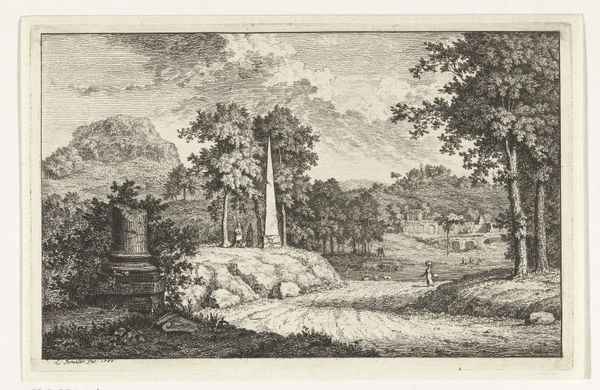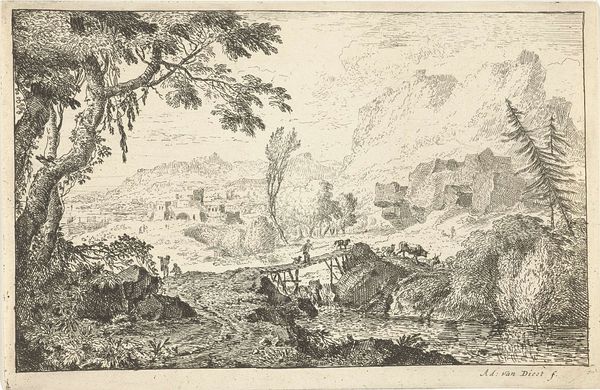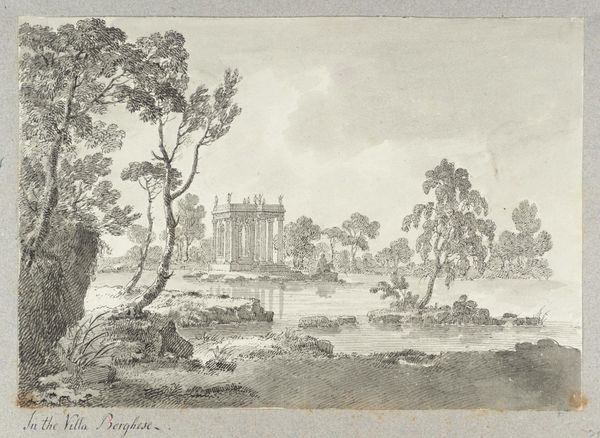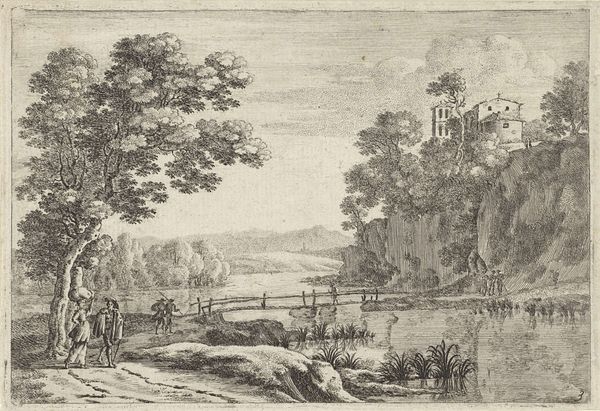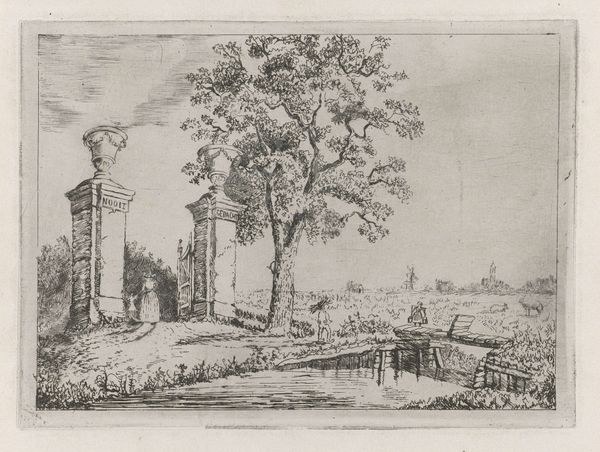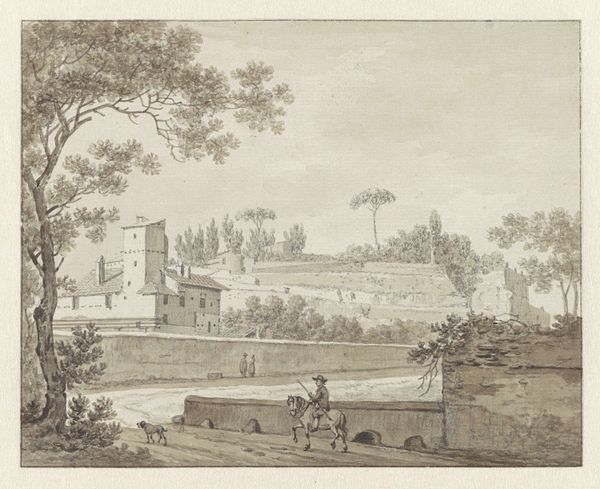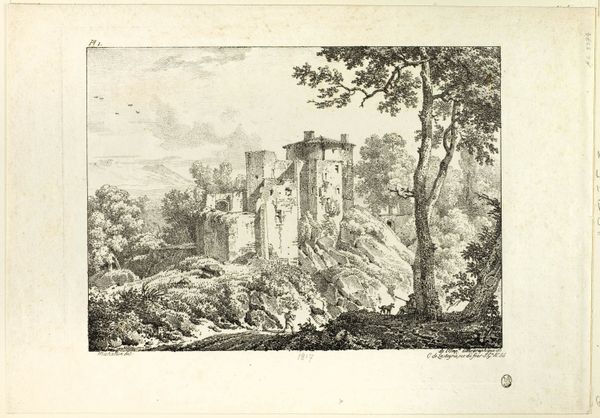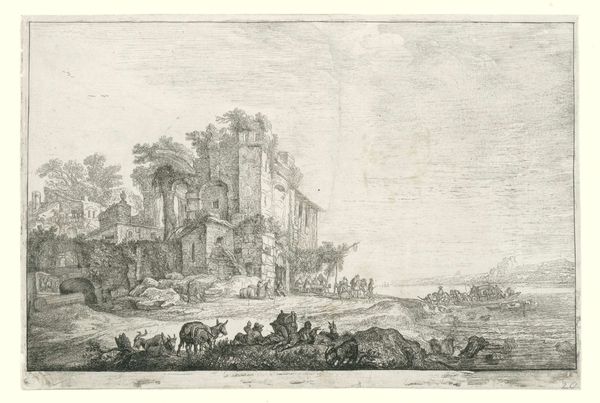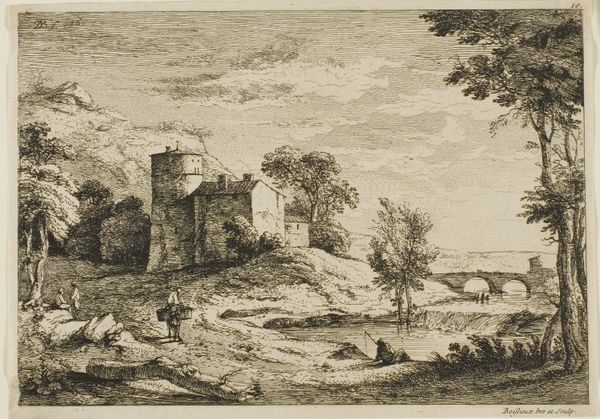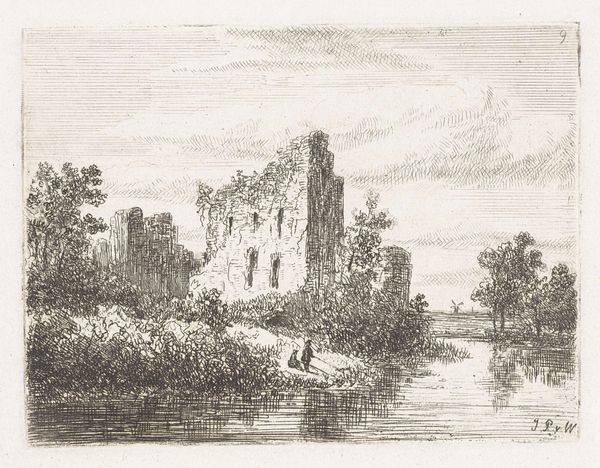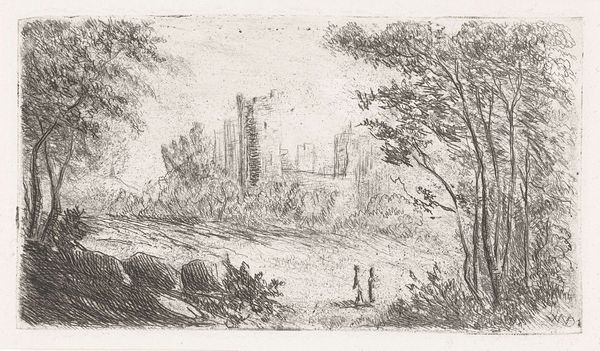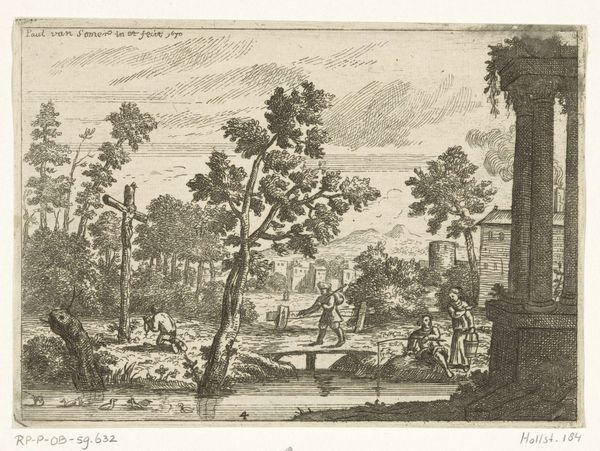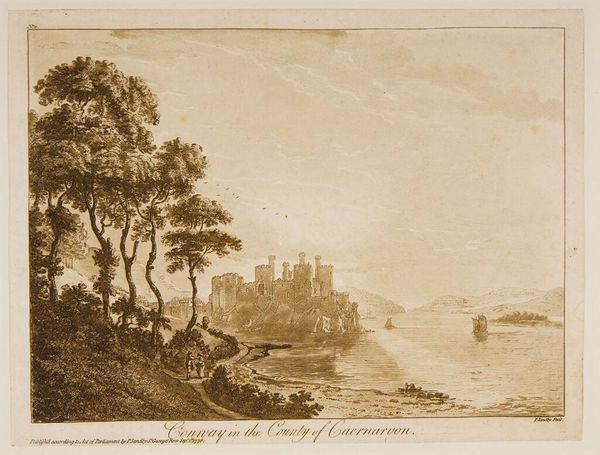
Dimensions: 295 × 455 mm (image); 325 × 480 mm (plate); 440 × 635 mm (sheet)
Copyright: Public Domain
Curator: This etching from 1776 by Paul Sandby offers us a picturesque view of Warwick Castle, specifically "Part of Warwick Castel from the Southeast, plate 4," as it's titled. Editor: It’s so atmospheric, isn't it? A bit like stepping into a dream – albeit one where you might trip over a rogue root or two. The hazy greys give it this very wistful feeling... makes you want to invent a story for all the little figures. Curator: Precisely. Note how Sandby uses etching to its fullest extent here. Observe the delicate lines building the texture of the foliage, and contrast this with the bolder, more definite strokes that constitute the formidable architecture. Editor: Absolutely, it's fascinating to me how such simple materials – paper, etching – conjure something so structurally massive and so undeniably English! It feels like I could row right up to the castle. It’s also interesting to consider why he focused on the view from the southeast, isn’t it? Was it simply the most picturesque angle, or was there some symbolic importance? Curator: I propose we consider how the artist manipulates light and shadow. Note the sharp contrasts, that strategically illuminate certain areas, drawing the viewer’s attention while allowing other parts to subtly fade into the background, constructing a hierarchy within the image itself. Editor: So clever! Speaking of strategy – even that little wisp of smoke rising on the right pulls the eye and disrupts any danger of predictability, I think. I love how those baroque-ish flourishes feel juxtaposed against the reality of what must've been quite a draughty existence in that castle back then. Brrr! Curator: Well observed! In terms of the wider artistic framework, its Baroque underpinnings provide visual delight and an engaging formalism to landscape work. Its thematic significance places value on not just visual beauty, but also on documenting and studying locations during this era. Editor: I come away with a fresh respect for Sandby's craft. This reminds us that great art can capture a space and freeze it, allowing viewers centuries later to almost wander those very banks of the river, a perfect mix of grandeur and storytelling. Curator: I concur, indeed a sophisticated use of space and line allows it to be viewed with an aesthetic sensitivity while remaining grounded in capturing and understanding this era of cityscapes and art production.
Comments
No comments
Be the first to comment and join the conversation on the ultimate creative platform.
